Japanese small-caliber anti-aircraft artillery
Given that the B-29 Superfortress strategic bombers could operate at an altitude of more than 9 km, heavy anti-aircraft guns with high ballistic characteristics were required to combat them. However, in the course of devastating sorties against Japanese cities using cluster incendiary bombs, in a number of cases, bombing at night was carried out from an altitude of no more than 1500 m. At the same time, there was a possibility of the Superfortress being hit by small-caliber anti-aircraft machine guns. In addition, shortly before the end of hostilities, a deck aviation The US Navy, as well as the P-51D Mustang and P-47D Thunderbolt fighters based at land airfields. American fighters, inflicting bombing and assault strikes using rockets and large-caliber machine guns, operated at low altitudes and were vulnerable to fire from automatic anti-aircraft guns of 20-40 mm caliber.
Japanese 20 mm anti-aircraft guns
The most common Japanese 20 mm anti-aircraft gun during the Second World War was the Type 98 automatic cannon. weapon dual-use: to combat light armored vehicles and to counter aircraft operating at low altitudes.
The Type 98 automatic cannon, which was put into service in 1938, was designed to replicate the 13,2 mm Hotchkiss М1929 machine gun, the license for which the Japanese government had acquired from France. For the first time, Type 98 cannons entered battle in 1939 in the vicinity of the Khalkhin-Gol River.
For firing from the Type 98, a 20 × 124 mm round was used, which is also used in the Type 97 anti-tank gun.The 20-mm armor-piercing tracer projectile weighing 109 g left the barrel 1400 mm long with an initial speed of 835 m / s. At a distance of 250 m along the normal, it pierced 20 mm armor.
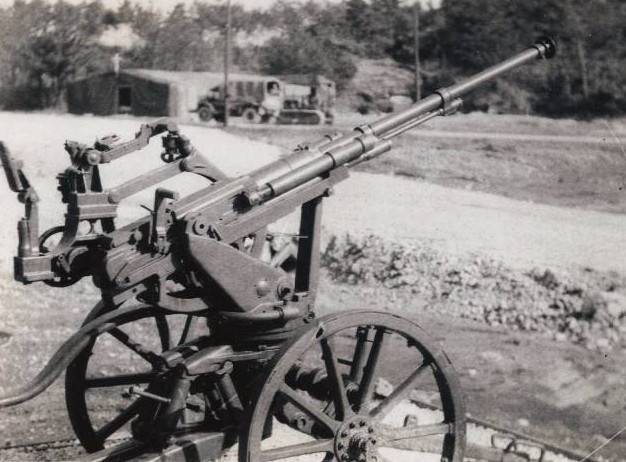
20-mm wheeled automatic anti-aircraft gun Type 98
The weight of the installation with wooden wheels was 373 kg. And she could be towed by a horse-drawn carriage or light truck at speeds up to 15 km / h. In the combat position, the anti-aircraft gun was hung out on three supports. The anti-aircraft gun had the ability to fire in the 360 ° sector, vertical guidance angles: from –5 ° to + 85 °. In case of urgent need, the fire could be fired from the wheels, but the accuracy dropped. Food was supplied from a 20-round magazine. The rate of fire was 280-300 rds / min. Combat rate of fire - 120 rds / min. The maximum firing range is 5,3 km. The effective firing range was about half that. Reach in height - about 1500 m.
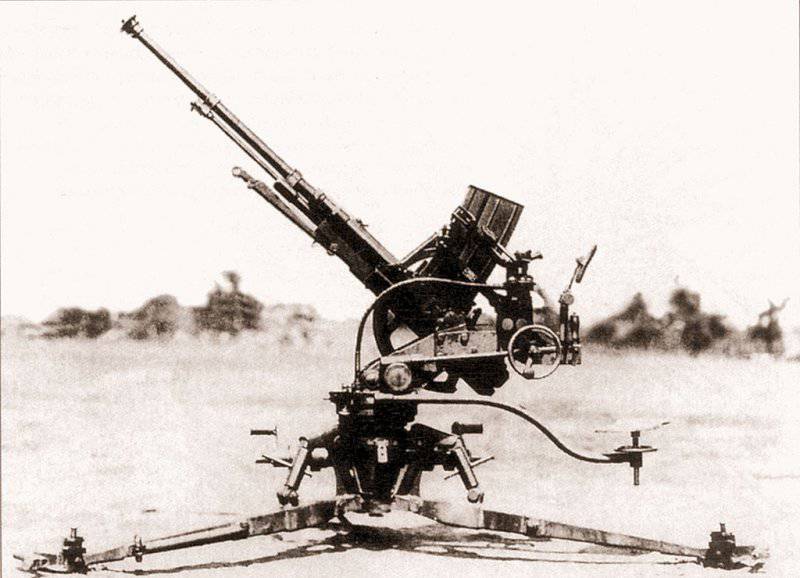
20 mm Type 98 automatic cannon in firing position
An experienced crew of six people could bring the anti-aircraft gun into a combat position in three minutes. For mountain rifle units, a collapsible modification was produced, individual parts of which could be transported in packs.
Production of the Type 98 small-caliber anti-aircraft gun continued until August 1945. About 2400 20-mm anti-aircraft guns were sent to the troops.
In 1942, the 20-mm Type 2 anti-aircraft gun entered service. This model was created, thanks to military-technical cooperation with Germany, and was a 20-mm anti-aircraft gun 2,0 cm Flak 38, adapted for Japanese ammunition.
Compared to the Type 98, this was a much more advanced gun, with greater reliability and rate of fire. The mass of the Type 2 in combat position was 460 kg. Rate of fire - up to 480 rds / min. The horizontal range and reach in height corresponded to the Type 98, but the effectiveness of anti-aircraft fire increased significantly.
The Type 2 automatic construction sight allowed the introduction of vertical and lateral lead. The input data into the sight were entered manually and determined by eye, except for the range, which was measured by a stereo range finder. Together with the anti-aircraft gun, documentation was received for an anti-aircraft fire control device, which could simultaneously transmit data and coordinate the fire of a battery of six anti-aircraft guns, which significantly increased the effectiveness of firing.
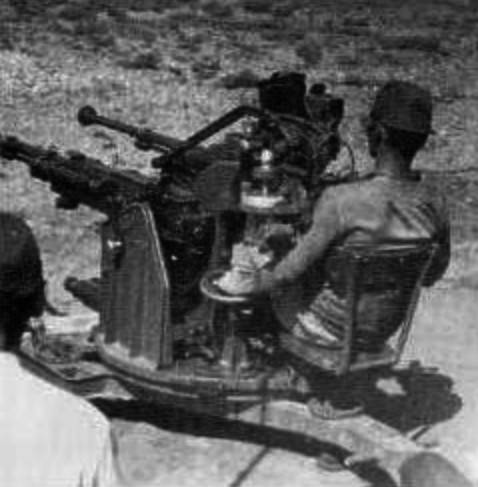
In 1944, using the Type 2 artillery unit, a coaxial 20-mm Type 4 anti-aircraft gun was created.
Until the time of Japan's surrender, it was possible to make approximately 500 Type 2 and 200 Type 4 twin pairs. They were produced both in a towed version and on pedestals that could be mounted on the decks of warships or in stationary positions.
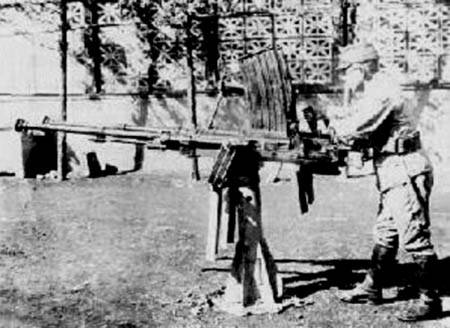
For Japanese air defense units tank divisions produced several dozen 20-mm self-propelled anti-aircraft guns. The most widespread was the installation based on the Type 94 three-axle truck (Isuzu TU-10).
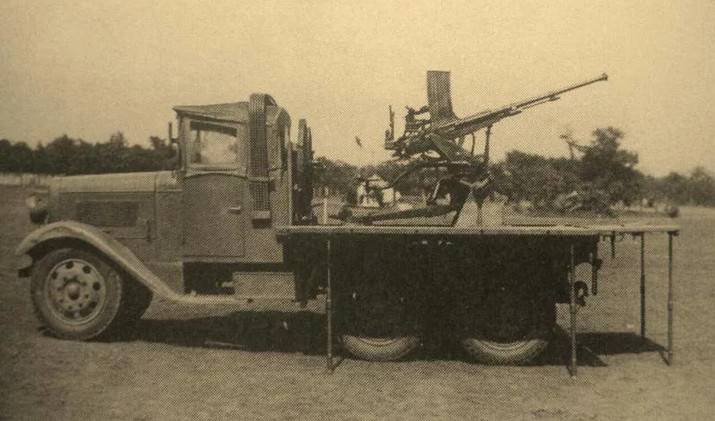
However, a small number of 20 mm assault rifles were placed on the chassis of half-track transporters and light tanks.
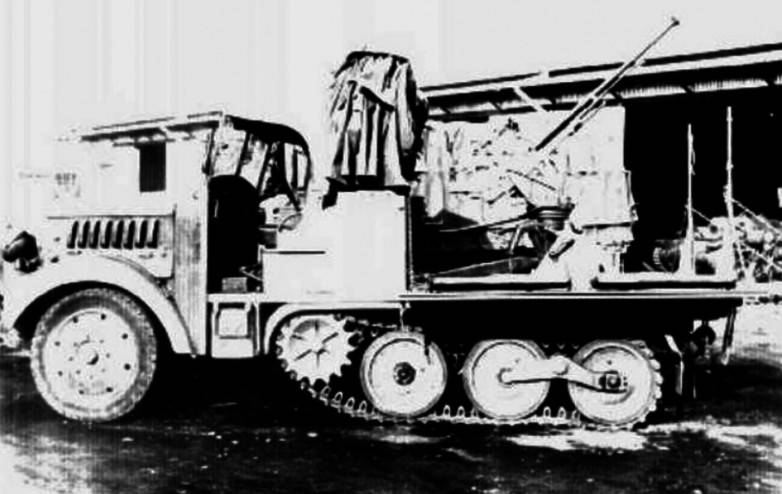
Japanese 20-mm anti-aircraft guns were mainly in service with army air defense units of the regimental and divisional level. They were actively used by the imperial army in all areas of land battles: not only against allied aircraft, but also against armored vehicles.
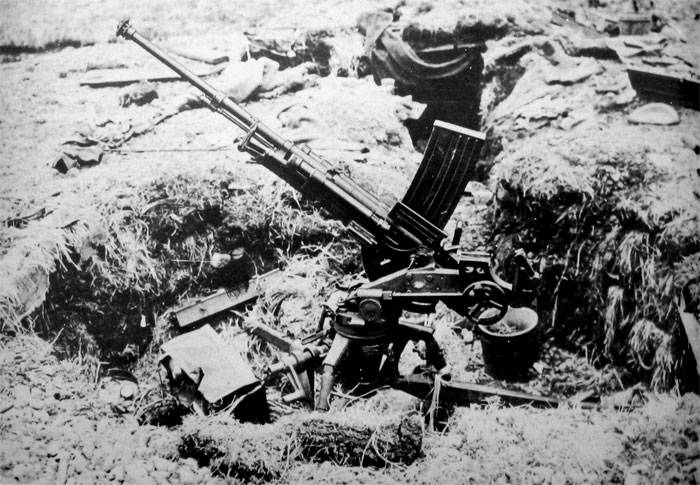
At the same time, there were not many 20-mm anti-aircraft guns in the air defense of the Japanese islands. Most of the Type 98 and Type 2 anti-aircraft guns were lost in the occupied territories during the defensive battles of 1944-1945.
Japanese 25 mm anti-aircraft guns
The most famous and widespread Japanese rapid-fire anti-aircraft gun was the 25-mm Type 96, which was produced in single-barrel, twin and triple versions. She was the main light anti-aircraft weapon of the Japanese fleet and was very actively used in the ground air defense units. This automatic anti-aircraft gun was developed in 1936 on the basis of the Mitrailleuse de 25 mm contre-aéroplanes, produced by the French company Hotchkiss. The main difference between the Japanese model and the original was the equipment of the German company Rheinmetall with a flame arrester and some differences in the machine.
Some of the built installations, located at stationary positions in the vicinity of naval bases and large airfields, were automatically guided by means of electric drives according to the data of PUAZO Type 95, and the shooters only had to press the trigger. Single and twin 25 mm anti-aircraft guns were guided only manually.
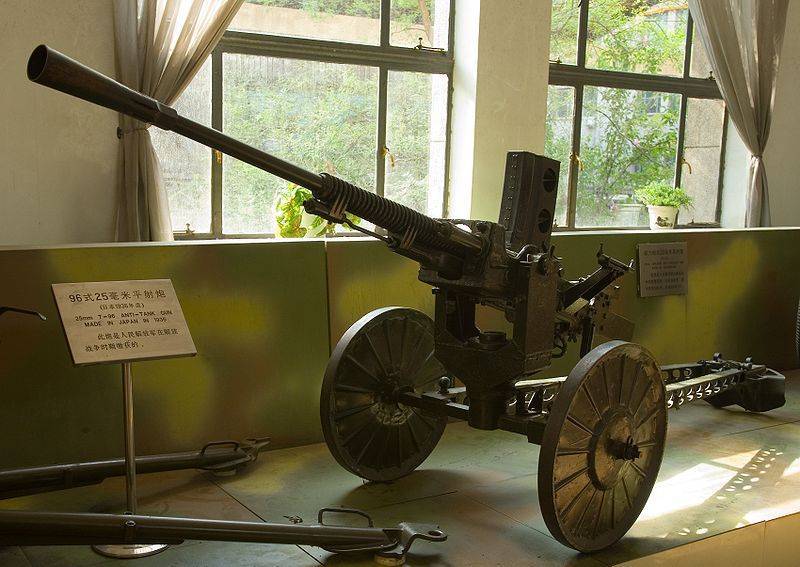
25mm Type 96 mount at the Chinese People's Revolution War Museum
A single-barreled 25-mm anti-aircraft gun weighed 790 kg, twin - 1112 kg, built - 1780 kg. Single-barreled and twin units were towed; when deployed to a firing position, the wheel drive was separated. In addition to the towed version, there was a single-barreled 25-mm column unit.
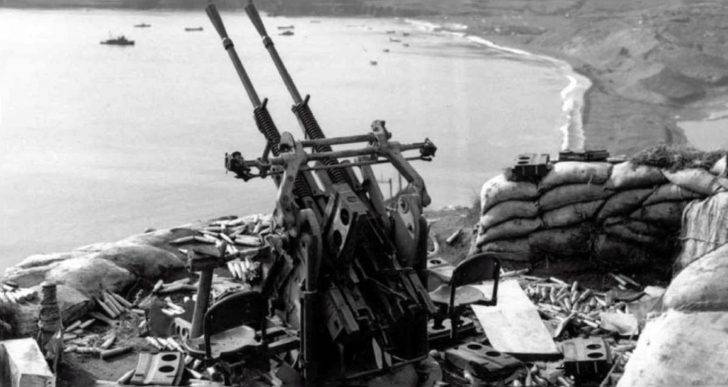
Twin automatic 25-mm Type 96 anti-aircraft gun captured by the Americans on the island of Kiska
Paired and triple installations, intended to be placed on warships and on capital well-fortified positions, were moved on cargo platforms and mounted on site using lifting devices.
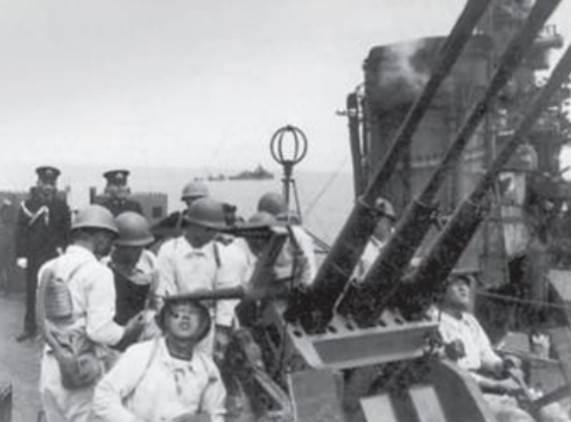
Built 25-mm anti-aircraft gun on the cruiser Oyodo
To increase mobility, such anti-aircraft guns were often placed on railway platforms, heavy trucks and towed trailers. The single-barrel unit was serviced by 4 people, the twin-barreled unit by 7 people, and the built-in unit by 9 people.
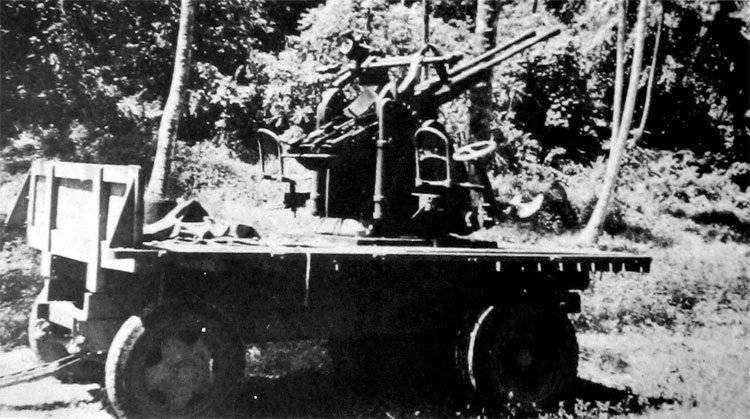
All 25-mm anti-aircraft guns were powered from 15-round magazines. The maximum rate of fire of a single-barreled machine gun did not exceed 250 rds / min. Practical rate of fire: 100-120 shots / min. Vertical guidance angles: from –10 ° to + 85 °. The effective firing range was up to 3000 m. The height reach was 2000 m. The ammunition load could include: high-explosive incendiary, fragmentation tracer, armor-piercing and armor-piercing tracer shells.
In terms of the striking effect, the 25-mm shells significantly exceeded the shells included in the ammunition of the 20-mm Type 98 and Type 2 anti-aircraft guns. The high-explosive 25-mm shell weighing 240 g left the barrel with an initial velocity of 890 m / s and contained 10 g of explosives. In a duralumin 3-mm sheet, it formed a hole, the area of which was approximately twice as large as in the explosion of a 20-mm projectile containing 3 g of explosive. At a distance of 200 meters, an armor-piercing projectile weighing 260 g, with an initial speed of 870 m / s, when hit at a right angle, could penetrate armor 30 mm thick. To confidently defeat a single-engine combat aircraft, in most cases, 2-3 hits of 25-mm armor-piercing tracer shells or 1-2 hits of high-explosive incendiary shells were enough.
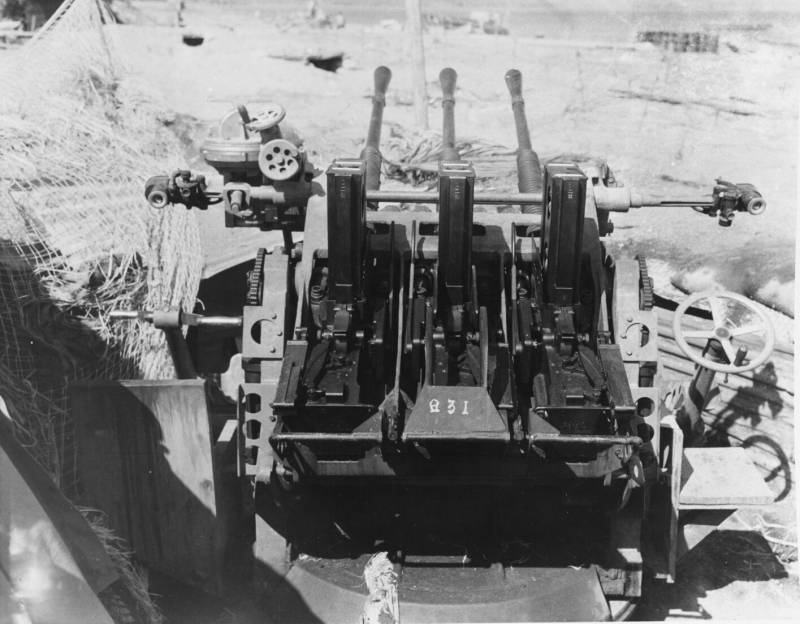
The 25-mm anti-aircraft gun built by the Americans during the battle for Guadalcanal
Given that the Japanese industry produced about 33000 25-mm installations, and the Type 96 became widespread, it was the calculations of these installations that shot down more of all American combat aircraft operating at low altitudes than the rest of the Japanese anti-aircraft guns combined.
For the first time, 25-mm anti-aircraft guns deployed on the Japanese islands opened fire on American bombers on April 18, 1942. These were twin-engined B-25B Mitchells, which had taken off from the USS Hornet aircraft carrier in the western part of the Pacific Ocean.
Subsequently, the Type 96 rapid-fire units took part in repelling the B-29 raids, when they attacked Tokyo and other Japanese cities at low altitude at night with incendiary bombs. However, given that the 25-mm anti-aircraft guns in most cases fired indirect barrage, the probability of hitting the bombers was small.
The American B-29 long-range bomber was a very large, strong and tenacious aircraft, and single hits from 25-mm shells in most cases did not cause critical damage to it. Cases have been repeatedly recorded when the Super Fortresses successfully returned after very close bursts of 75-mm anti-aircraft shells.
Japanese 40 mm anti-aircraft guns
Until the mid-1930s, Great Britain supplied Japan with 40-mm Vickers Mark VIII anti-aircraft guns, also known as "pom-pom". These rapid-fire, water-cooled guns were designed to provide air defense for warships of all classes. In total, the Japanese received about 500 British 40-mm automatic anti-aircraft guns. In Japan they were designated Type 91 or 40 mm / 62 "HI" Shiki and were used in single and twin mounts.
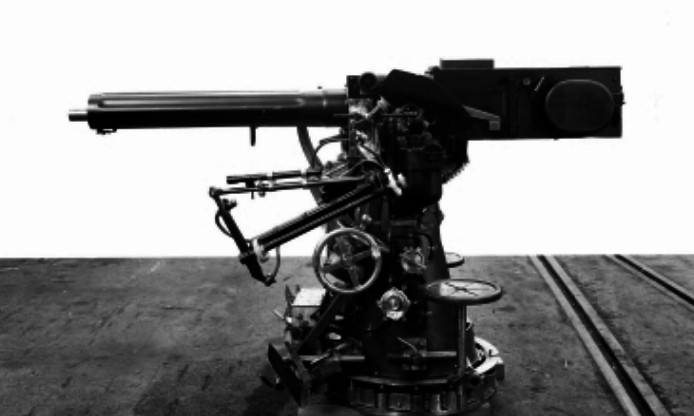
40-mm Type 91 naval anti-aircraft machine gun
The Type 91 anti-aircraft machine gun weighed 281 kg, the total weight of the single-barreled installation exceeded 700 kg. Food was carried out from a tape for 50 shots. To increase the rate of fire, the Japanese tried to use a tape twice as large, but due to a decrease in the reliability of the supply of shells, they refused this. The already standard belt had to be thoroughly lubricated before use for better broaching.
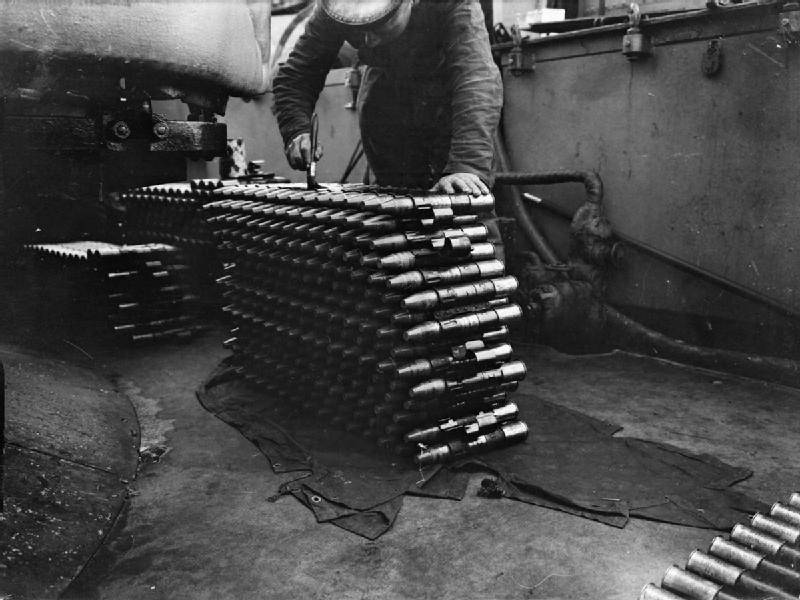
The 40-mm Type 91 mount had the ability to fire in a 360 ° sector, vertical guidance angles: from -5 ° to + 85 °. The rate of fire was 200 rds / min., The practical rate of fire was 90–100 rds / min.
For the late 1920s, the "pom-pom" was a completely satisfactory anti-aircraft gun, but by the beginning of World War II it was outdated. With a sufficiently high rate of fire, the sailors were no longer satisfied with the range of destruction of air targets. The reason for this was the weak 40x158R ammunition. A 40-mm projectile weighing 900 g left the barrel with an initial speed of 600 m / s, while the effective firing range at fast-moving air targets slightly exceeded 1000 m. In the British Navy, to increase the range of "pom-poms", high-speed projectiles with an initial speed of 732 were used m / s. However, such ammunition was not used in Japan.
Due to the insufficient firing range and short height reach at the end of the 1930s, on the main types of Japanese warships, Type 91 submachine guns were replaced by 25-mm Type 96 anti-aircraft guns. Most of the freed 40-mm belt-fed anti-aircraft guns migrated to auxiliary ships and troop transports.
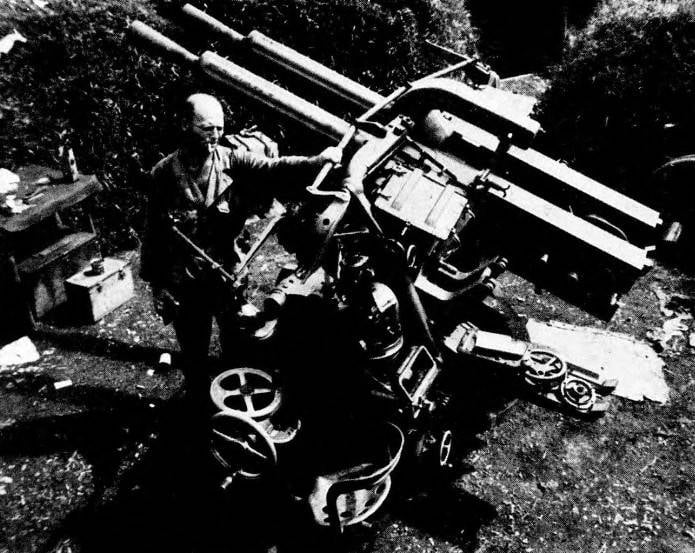
Approximately a third of the Type 91 installations were placed onshore in the vicinity of naval bases. Several "pom-poms" were seized in good condition by the US ILC on the islands liberated from the Japanese.
Given the fact that the outdated 40-mm anti-aircraft guns had insufficient height reach, they did not pose a particular threat to the four-engine B-29s, even when they were lowered for incendiary bombs. But the aircraft of the American carrier-based aviation, "Thunderbolts" and "Mustangs", Type 91 anti-aircraft guns could shoot down. The hit of one 40-mm fragmentation tracer, containing 71 g of explosives, was quite enough for this.
In the 1930s-1940s, the 40-mm Bofors L / 60 cannon was the benchmark for an anti-aircraft gun of this class. With a mass of about 2000 kg, this installation ensured the defeat of air targets flying at an altitude of 3800 m and a range of up to 4500 m. Well-coordinated loaders provided a rate of fire of up to 120 rds / min. The muzzle velocity of the 40-mm "Bofors" was one third higher than that of the "pom-pom" - a projectile weighing 900 g accelerated in the barrel to 900 m / s.
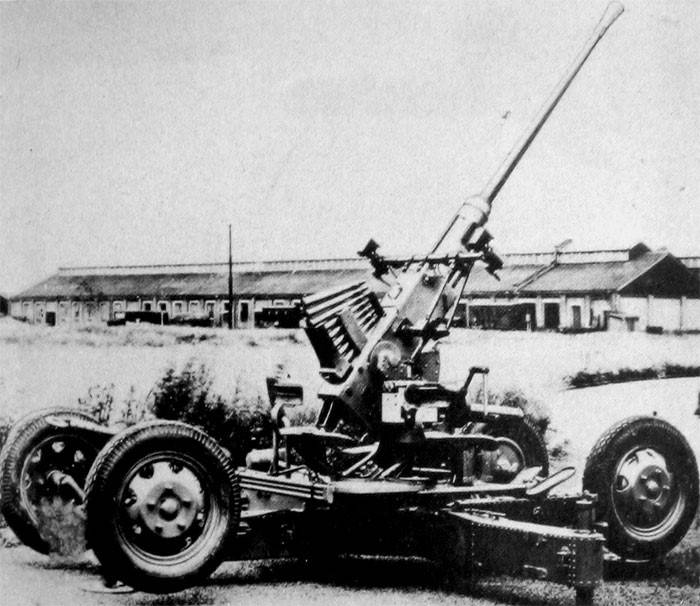
In the course of hostilities, the Japanese pilots more than once had the opportunity to be convinced of the combat effectiveness of the Bofors L / 60 anti-aircraft guns, which the Americans, British and Dutch had. The hit of one 40-mm projectile in most cases turned out to be fatal for any Japanese aircraft, and the firing accuracy, when the anti-aircraft gun was served by a well-prepared crew, turned out to be very high.
After the occupation by Japan of a number of colonies belonging to the Netherlands and Great Britain, the Japanese army had more than a hundred towed 40-mm Bofors L / 60 anti-aircraft guns and a significant amount of ammunition for them at the disposal of the Japanese army.
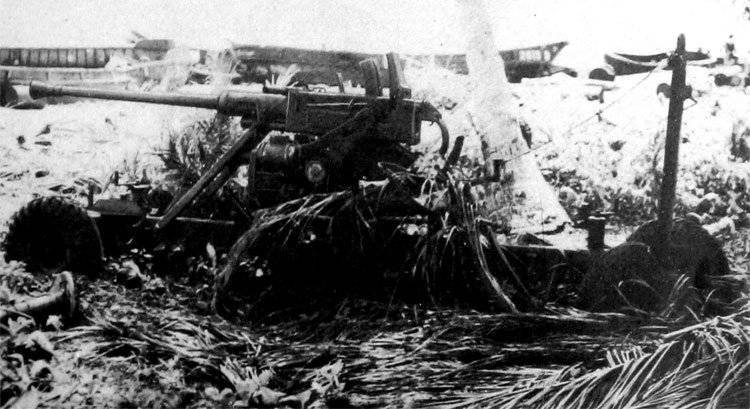
Taking into account the fact that such captured anti-aircraft guns were of great value in the eyes of the Japanese military, they organized their recovery from ships sunk in shallow water.
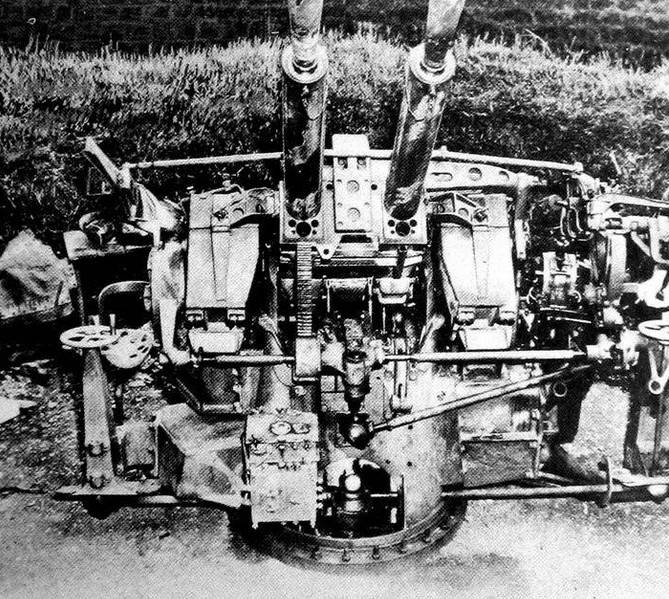
Former Dutch naval anti-aircraft guns Hazemeyer, which used paired 40-mm machine guns, were permanently installed on the coast and used by the Japanese in the defense of the islands.
Given that the Japanese armed forces were in dire need of rapid-fire anti-aircraft guns with a higher effective range than the 25 mm Type 96, the decision was made in early 1943 to copy and start mass production of the Bofors L / 60.
Initially, at the production facilities of the Yokosuka naval arsenal, it was supposed to establish the production of paired 40-mm anti-aircraft guns, similar to the Dutch Hazemeyer installation, and towed land anti-aircraft guns.
However, due to the fact that the Japanese engineers did not have the necessary technical documentation, and the industry was unable to produce parts with the required tolerances, in fact, it was possible to master the semi-handicraft production of the Japanese unlicensed version of the 40-mm "Bofors", designated Type 5.
From the end of 1944 in the artillery workshops of Yokosuka, at the cost of heroic efforts, they produced 5-8 towed anti-aircraft guns per month, and ship "twin" were built in a number of copies. Despite the individual fit of the parts, the quality and reliability of the Japanese 40mm anti-aircraft guns were very low. The troops received several dozen Type 5 guns. But due to their unsatisfactory reliability and small numbers of influence on the course of hostilities, they did not.
Analysis of the combat capabilities of Japanese small-caliber anti-aircraft guns
The Japanese 20-mm anti-aircraft guns were generally quite consistent with their purpose. However, given that in 1945 the size of the imperial army was approximately 5 million people, 20-mm machine guns, issued in an amount of slightly more than 3000 units, were clearly not enough.
25-mm anti-aircraft guns were widely used in the navy and ground forces, but their characteristics cannot be considered optimal. Since the food was supplied from 15-round magazines, the practical rate of fire was low. For such a caliber, a belt-fed anti-aircraft gun would be more suitable. But in the 1930s, the Japanese did not have the necessary weapons design school. And they chose to copy the finished French sample.
A significant drawback was only the air cooling of the barrels of the guns, even on ships, which reduced the duration of continuous firing. Anti-aircraft fire control systems also left much to be desired, and they were clearly not enough. Single anti-aircraft guns, which are the most mobile, were equipped with a primitive anti-aircraft sight, which, of course, negatively affected the effectiveness of firing at air targets.
The 40mm "pom-poms" purchased from Great Britain were clearly outdated by the end of the 1930s. And they could not be considered an effective means of air defense. The Japanese captured relatively little of the very perfect 40-mm Bofors L / 60, and they failed to bring the unlicensed copy of the Type 5 to an acceptable level.
Based on the foregoing, it can be stated that the Japanese small-caliber anti-aircraft guns, due to organizational, design and production problems, did not cope with the tasks assigned to them. And they did not provide reliable cover for their troops from low-altitude attacks by attack aircraft and bombers.
The Japanese military industry was unable to establish mass production with the required quality of the most demanded anti-aircraft guns. In addition, the sharp rivalry between the army and the navy led to the fact that most of the most massive 25-mm anti-aircraft guns were installed on warships, and ground units were poorly protected from enemy air raids.
To be continued ...
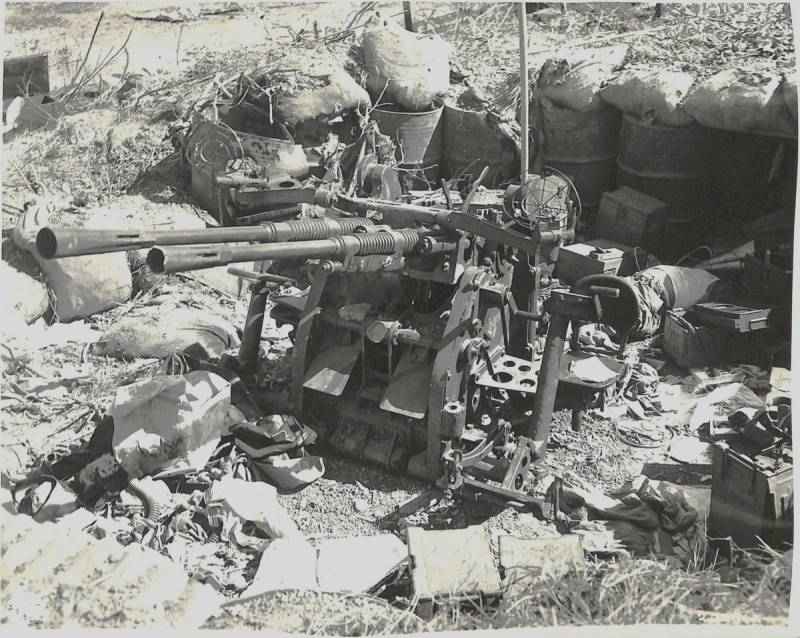
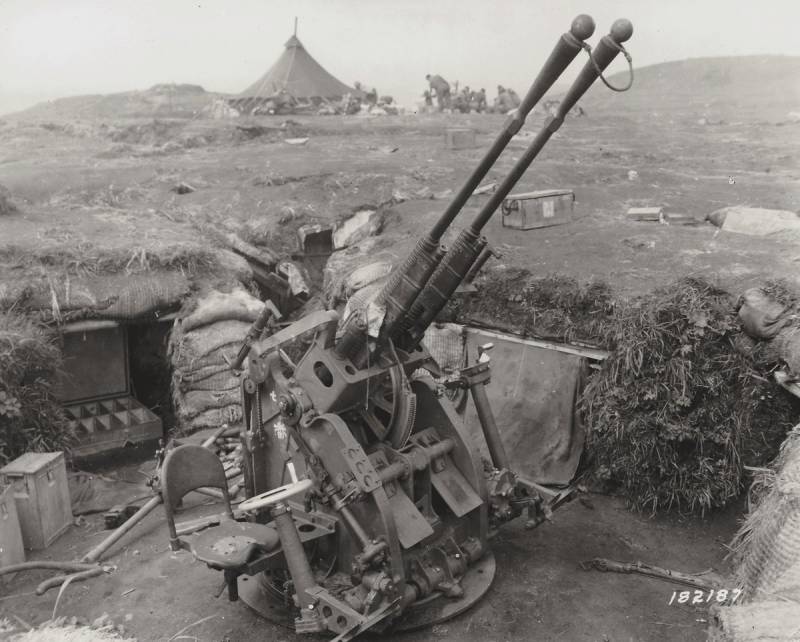
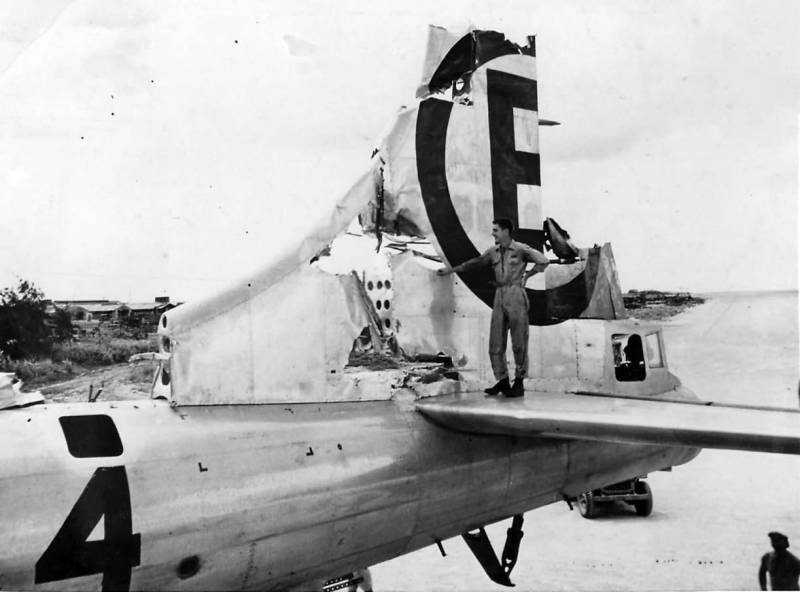
Information